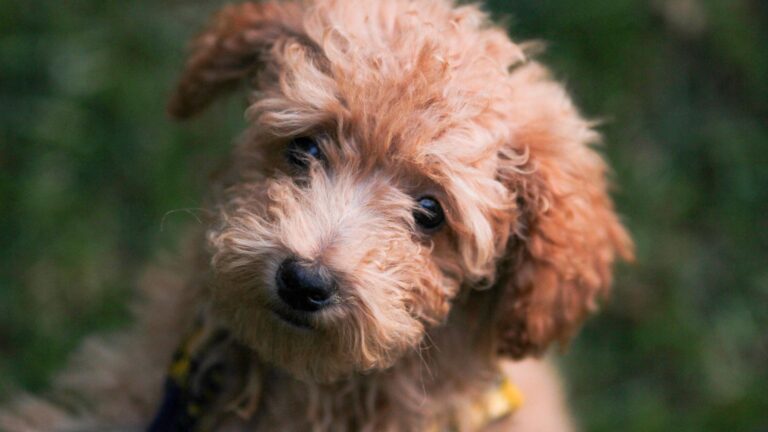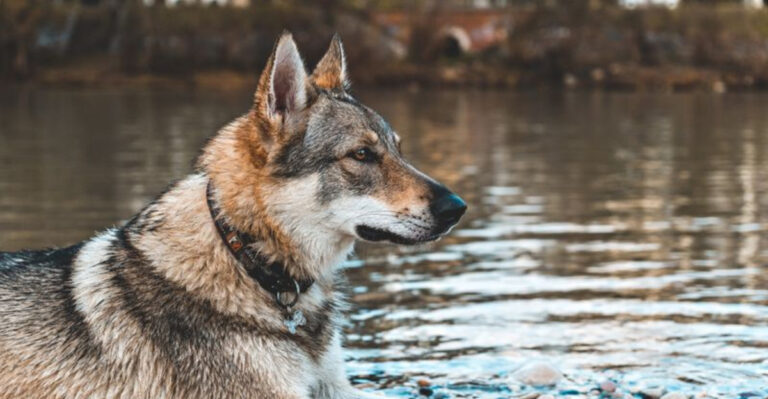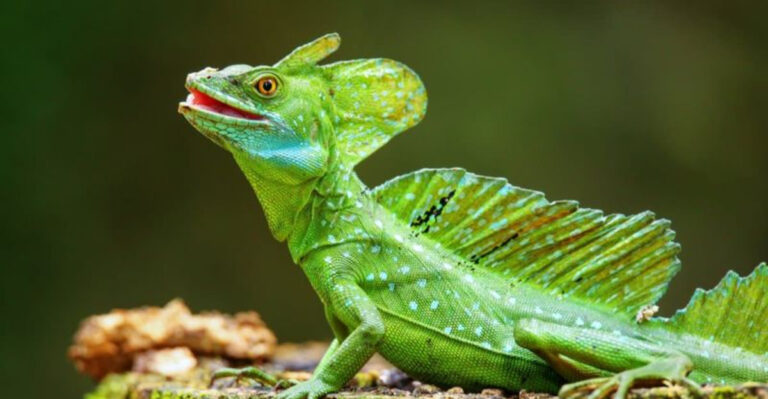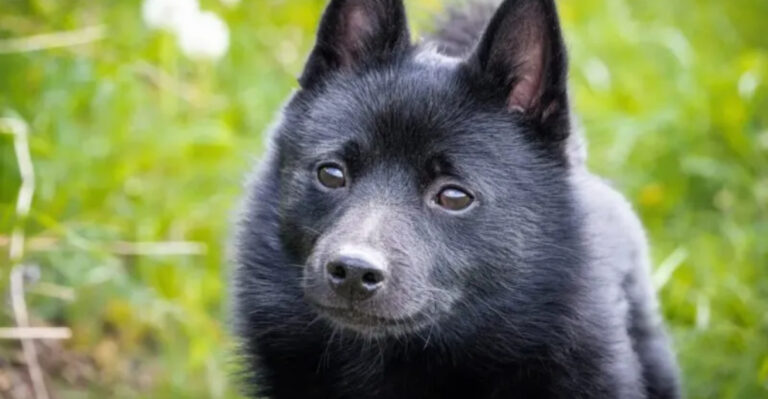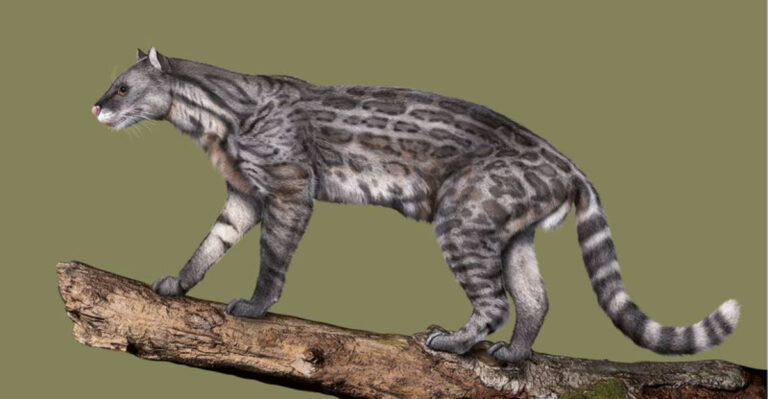8 Common Hoof Mistakes New Horse Owners Make (And 7 Easy Fixes)
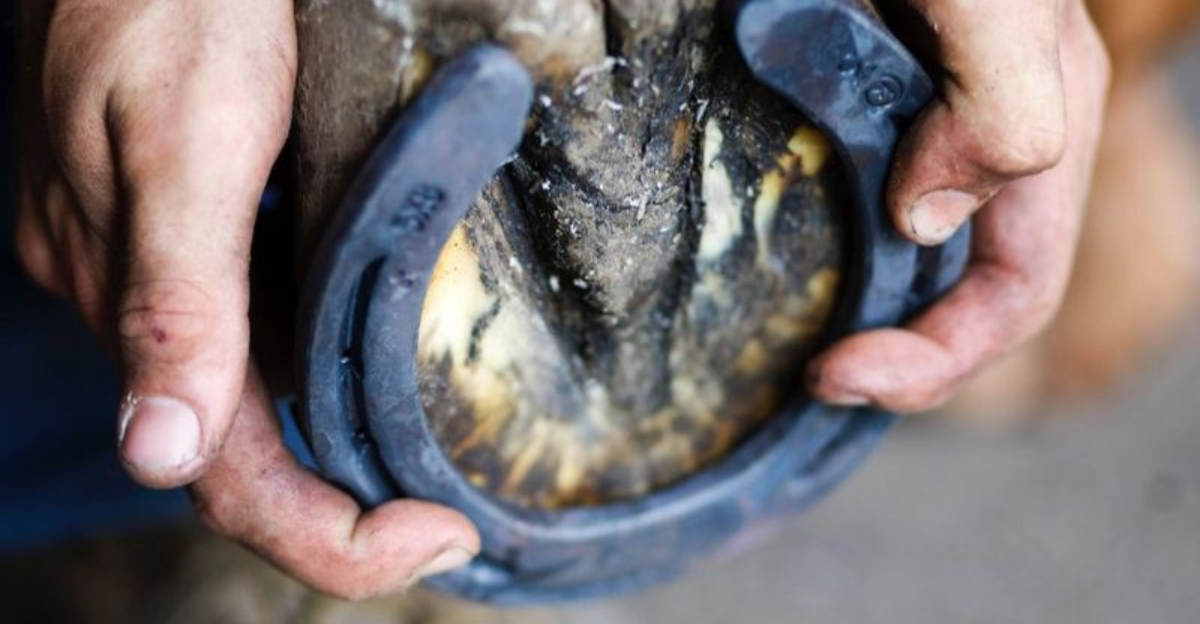
Healthy hooves are the foundation of a happy horse. Taking care of your equine friend’s feet might seem straightforward, but many new horse owners make simple mistakes that can lead to serious problems down the road.
The good news? Most common hoof care errors have easy solutions that don’t require veterinary expertise or expensive equipment.
1. Neglecting Regular Hoof Care
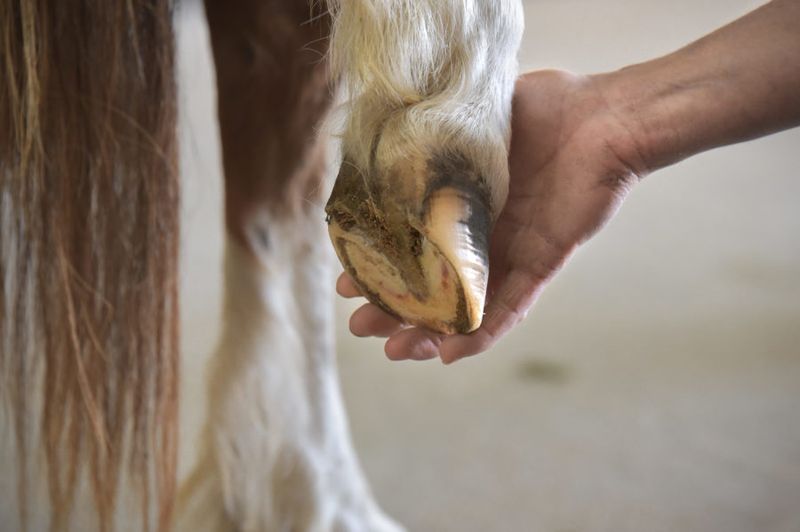
Your horse’s hooves grow constantly, just like your fingernails. When left unchecked, they can develop cracks, chips, or become painfully overgrown. Many new owners underestimate how quickly problems can develop.
Wild horses naturally wear down their hooves by traveling miles daily over varied terrain. Your domesticated horse doesn’t have this advantage. Without regular maintenance, even a healthy hoof can deteriorate in just weeks.
Neglected hooves can lead to lameness, infection, and expensive veterinary bills that could have been easily avoided.
2. Using Incorrect Hoof Picks
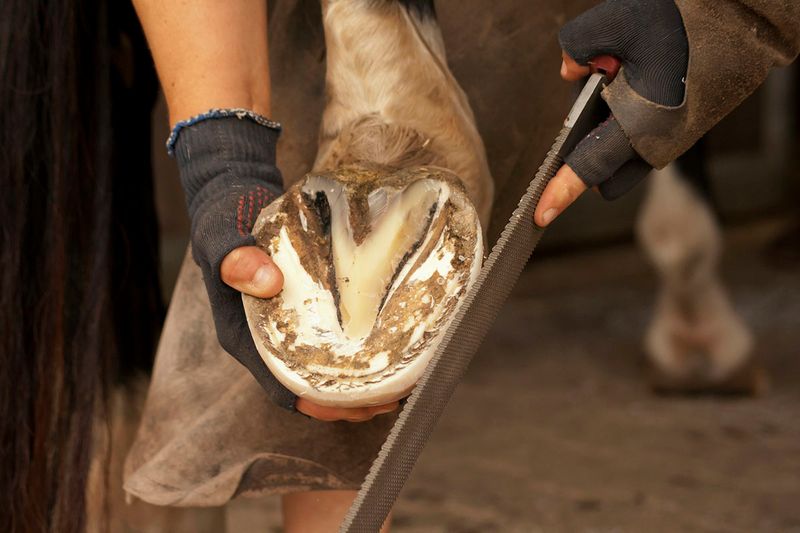
Grabbing any pointy tool from your tack box might seem efficient, but using the wrong hoof pick can damage sensitive hoof structures. Metal picks with sharp points can accidentally gouge the frog or sole when used with too much force.
Some owners also use the pick incorrectly, jabbing rather than scraping to remove debris. This aggressive approach risks injury to both horse and handler.
The wrong tool not only makes cleaning ineffective but can create tiny injuries that invite bacteria and infection into the hoof.
3. Ignoring Signs Of Lameness
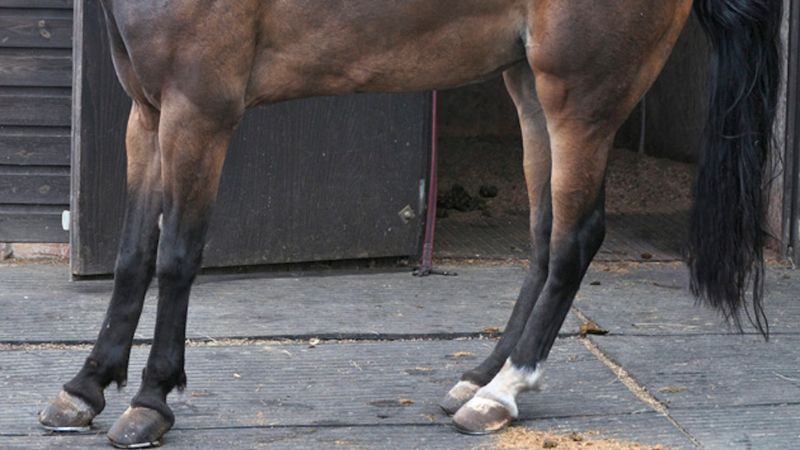
Horses can’t tell us when their feet hurt, so they communicate through subtle behavior changes. A slight head bob, reluctance to turn, or shifting weight when standing might seem minor but often signals pain.
New owners sometimes dismiss these early warning signs as behavioral issues or temporary stiffness. By the time obvious limping appears, the problem has typically worsened significantly.
Early intervention for hoof problems can mean the difference between a quick recovery and a chronic condition that limits your horse’s usefulness.
4. Overlooking The Importance Of Proper Shoeing
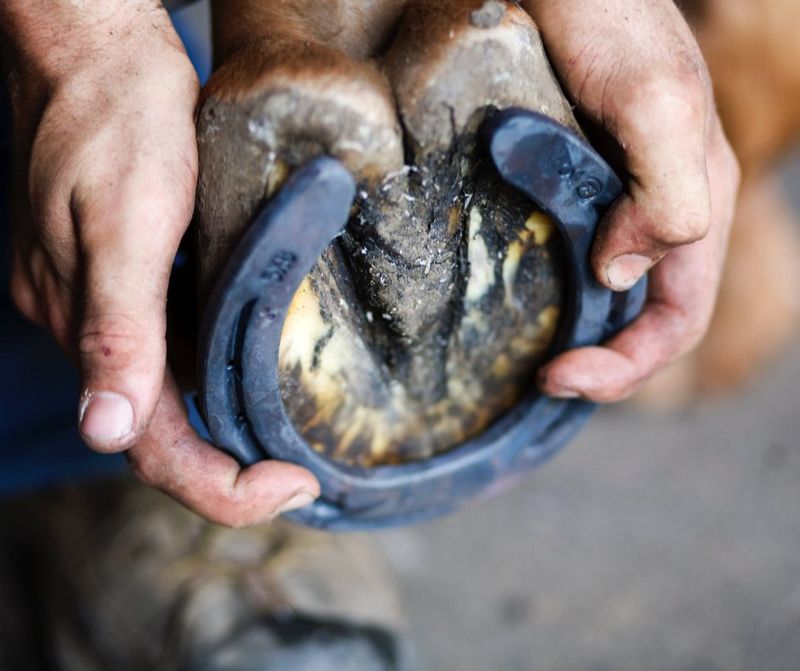
Many rookie horse owners view horseshoes as simple metal accessories rather than precision medical devices. Improperly fitted shoes can cause immediate pain and long-term damage to your horse’s legs and back.
One-size-fits-all approaches to shoeing ignore the unique conformation and movement patterns of individual horses. Different disciplines, terrain types, and seasonal changes all affect what type of shoeing is appropriate.
Even small imbalances in shoeing can create uneven stress that travels up the leg, potentially causing joint problems over time.
5. Improper Stall Bedding
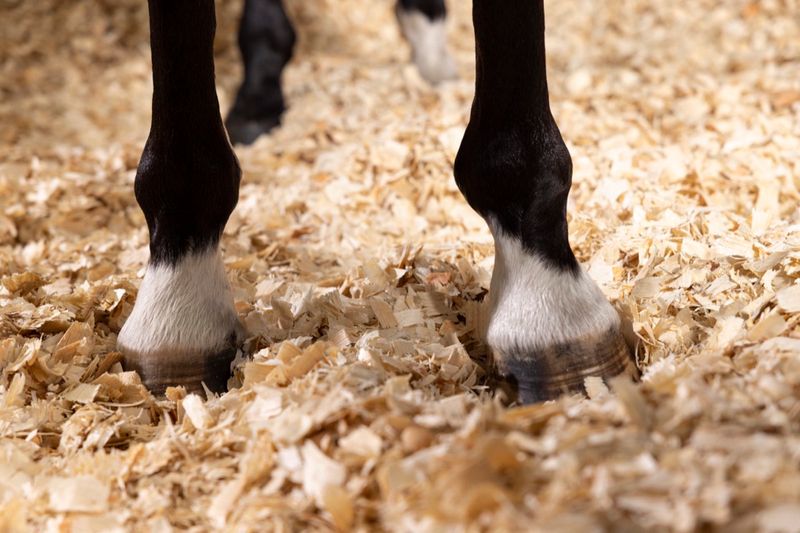
That cushy, deep bedding might look comfortable, but it could be harming your horse’s hooves. Wet, dirty, or ammonia-soaked bedding creates the perfect breeding ground for bacteria that cause thrush and other infections.
Some owners pile bedding too high around the edges of stalls, creating moisture traps. Others use inappropriate materials that either don’t absorb enough or hold too much moisture against the hoof.
Constant exposure to damp conditions softens hooves, making them more susceptible to bruising, cracking, and penetration by foreign objects.
6. Not Keeping Hooves Dry
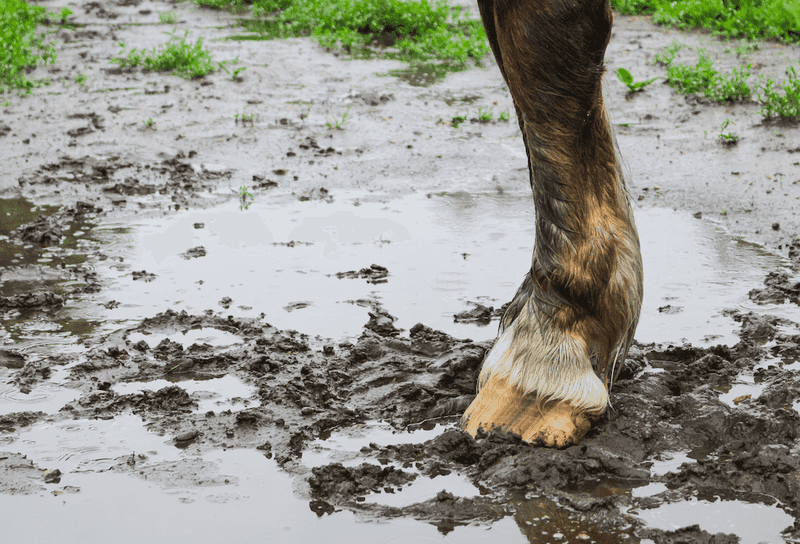
Perpetually soggy hooves spell trouble! Excessive moisture weakens the hoof wall, making it soft and prone to bacterial invasion. Many new horse owners don’t realize that too much water exposure can be just as harmful as too little.
Horses standing in muddy paddocks or frequently hosing legs without proper drying creates ideal conditions for thrush and white line disease. These fungal and bacterial infections thrive in damp environments.
Once established, hoof infections can be stubborn to eliminate and may require weeks of treatment and environmental changes.
7. Failing To Monitor Hoof Growth
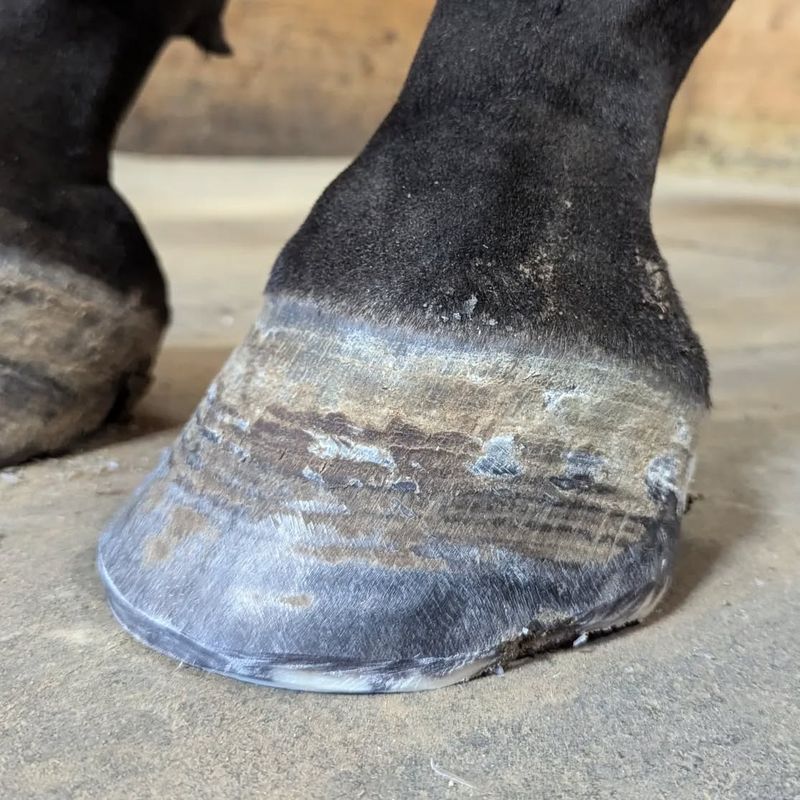
Hooves don’t grow uniformly – they often develop unevenly based on terrain, exercise, and individual horse genetics. Beginners frequently miss subtle changes in angle, heel height, or wall thickness that signal developing problems.
Without regular monitoring, flares can develop where the hoof wall begins to separate and curve outward. These weakened areas invite cracks and breaks that compromise the entire hoof.
Even with regular farrier visits, owners should understand normal hoof appearance for their specific horse and be able to spot concerning changes between professional trims.
8. Riding On Hard Or Rocky Surfaces Too Often
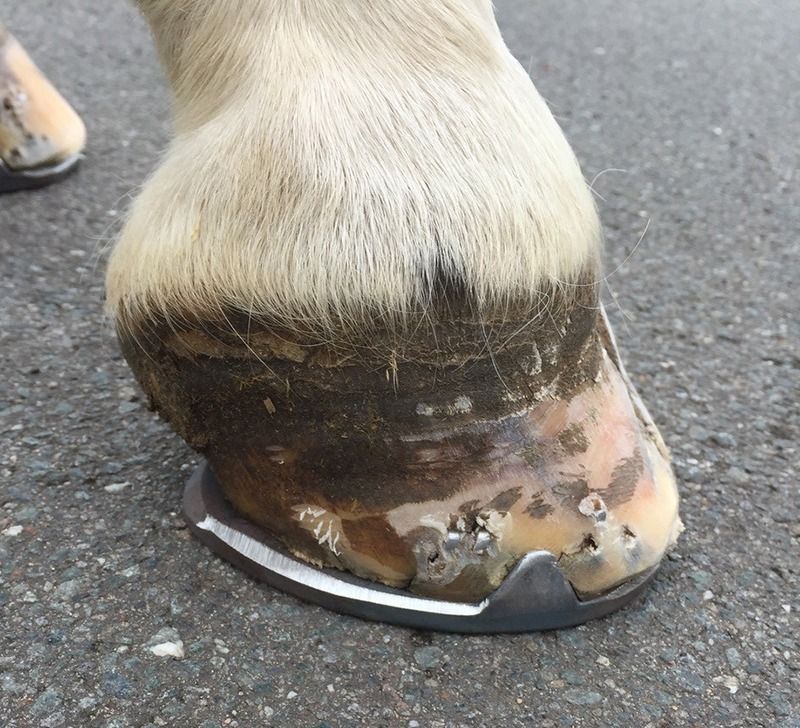
Enthusiastic new riders often underestimate how surfaces impact hoof health. Constant work on asphalt, concrete, or rocky terrain creates concussive forces that travel through the hoof into joints and soft tissues.
This repeated trauma can cause bruising that may not be immediately visible but creates pain and inflammation within the hoof capsule. Over time, these impacts contribute to conditions like navicular syndrome and arthritis.
Barefoot horses are particularly vulnerable to stone bruising and sole penetration when ridden frequently on harsh surfaces without proper conditioning.
9. Establish A Routine For Regular Hoof Cleaning And Trimming
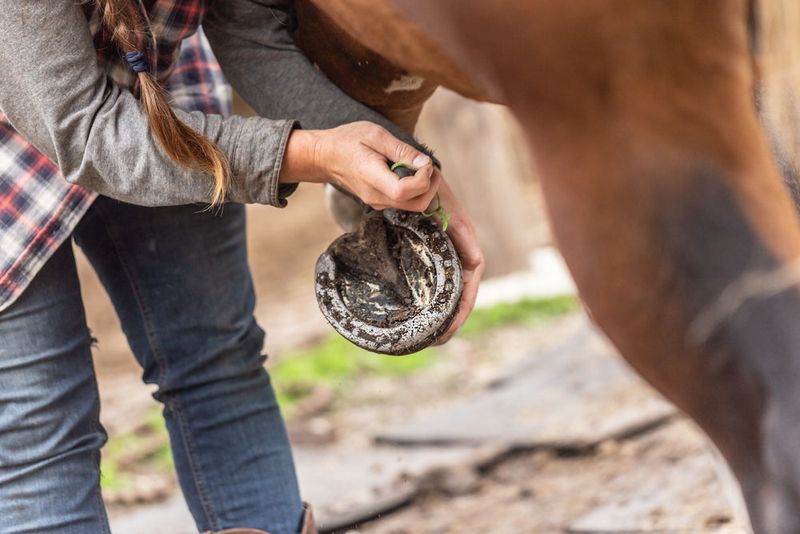
Now onto ways for improvement! First things first: mark your calendar for daily hoof cleaning and 4-6 week farrier appointments. Consistency is your strongest weapon against hoof problems! Most professional riders clean hooves before and after every ride, plus morning and evening checks.
Create a simple checklist that includes picking out debris, checking for heat or odor, and examining the frog for signs of thrush. These quick daily inspections catch minor issues before they become major expenses.
Keep a hoof pick by every entrance to your barn as a visual reminder of this essential task.
10. Invest In A Quality Hoof Pick
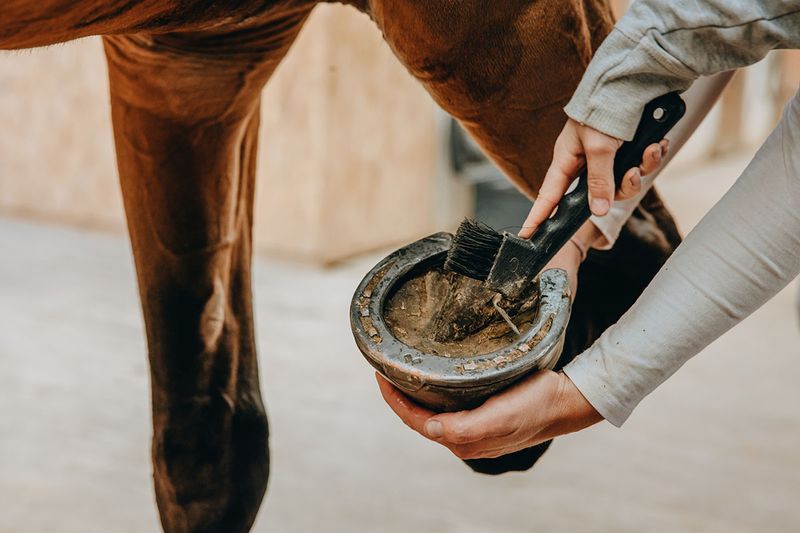
The humble hoof pick might be your most important horse care tool! Choose one with a comfortable grip and a blunt, curved end that won’t damage sensitive structures. The brush attachment helps clear away smaller particles after picking.
Learn to work from heel to toe, following the natural grooves beside the frog. This technique removes debris without risking injury to you or your horse.
Never rush the process – thorough cleaning prevents small stones from causing bruises and removes manure that can harbor bacteria.
11. Consult A Farrier For Advice
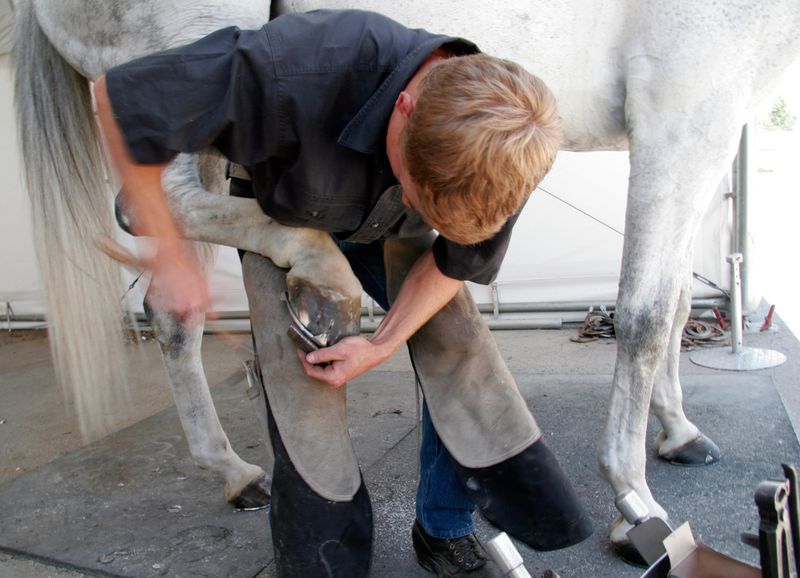
Your farrier isn’t just a hoof trimmer – they’re a specialized medical professional! Schedule an educational session where they can explain your horse’s specific hoof conformation and needs. Many farriers welcome these conversations between regular appointments.
Take photos of your horse’s hooves after fresh trims or new shoes as reference points. This documentation helps track changes over time and communicate concerns effectively.
Ask about seasonal shoeing adjustments – many horses benefit from different approaches in summer versus winter conditions.
12. Use Clean, Dry Bedding And Replace It Regularly
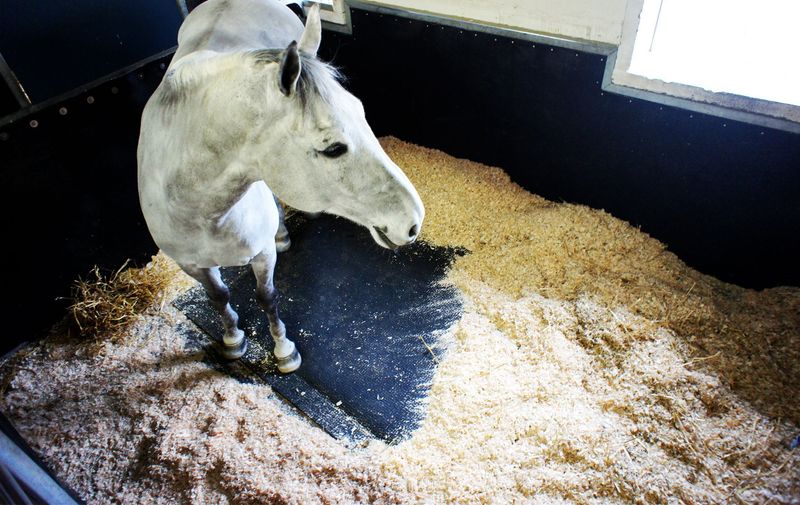
Stall management directly impacts hoof health! Choose absorbent bedding materials like kiln-dried pine shavings or pellets that pull moisture away from hooves. Avoid dusty or moldy hay that can harbor harmful bacteria.
Develop a smart mucking strategy – remove all wet spots and manure daily, not just the obvious piles. The ammonia from urine is particularly damaging to hoof structure.
Consider rubber mats under bedding for easier cleaning and better moisture control, especially in areas where your horse stands to eat.
13. Ensure Hooves Stay Dry
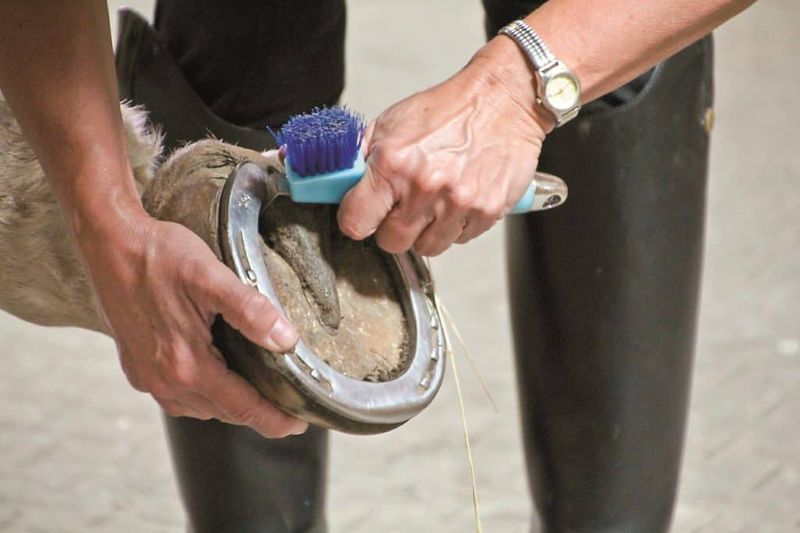
Moisture management makes all the difference in hoof health! Create dry standing areas in paddocks using crushed stone or other materials that promote drainage. Even small dry zones give hooves a chance to dry out naturally.
After baths or wet conditions, towel off your horse’s legs and apply hoof dressing if appropriate for your climate. These products can help repel excess moisture while allowing natural flexibility.
Consider turnout schedules that limit extended exposure to dewy morning grass or post-rain mud when possible.
14. Schedule Regular Farrier Visits
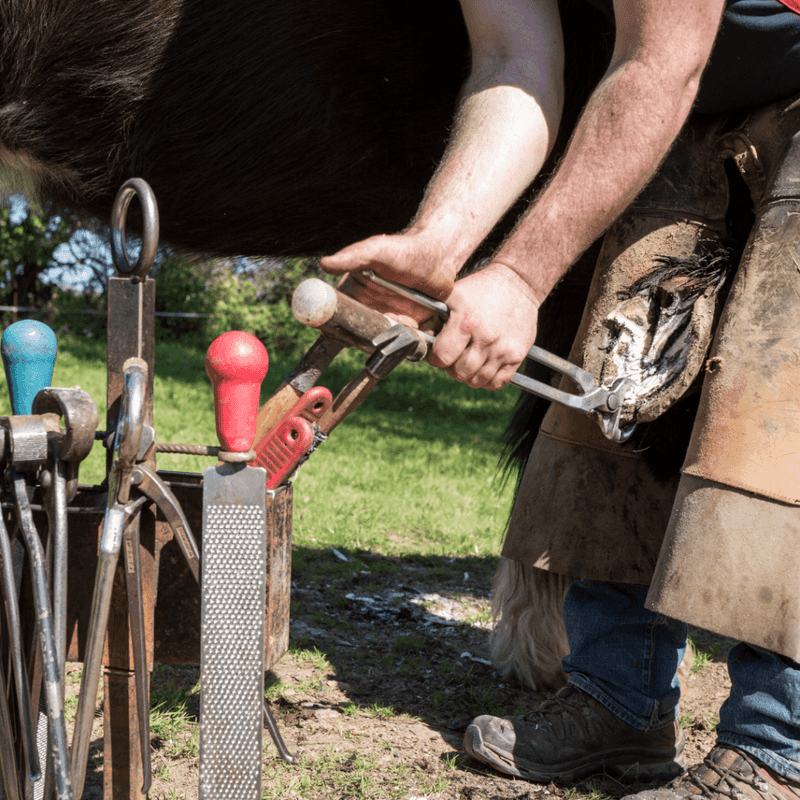
Your farrier’s expertise is worth its weight in gold! Most horses need professional attention every 4-8 weeks, depending on growth rates and activity levels. Block out these appointments months in advance to ensure you never miss one.
Between visits, take weekly photos of your horse’s hooves from consistent angles to track subtle changes. Front, side, and bottom views create a comprehensive record that helps identify developing problems.
Ask your farrier to show you what balanced hooves look like for your specific horse, as ideal angles vary between individuals.
15. Limit Exposure To Hard, Uneven Ground
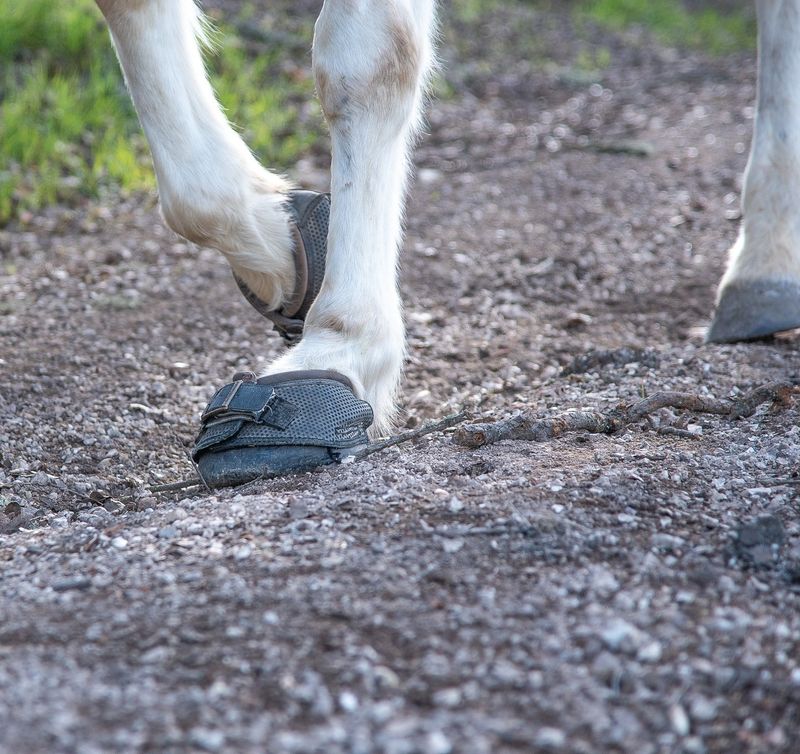
Smart riders match terrain to their horse’s hoof condition! Gradually condition hooves for challenging surfaces through progressive exposure rather than sudden long rides on rough ground. This methodical approach builds tougher, more resilient feet.
Consider protective boots for occasional rocky trail rides instead of permanent shoes if your horse is normally barefoot. These removable options provide situational protection without altering natural hoof function.
Create riding routes that incorporate varied but appropriate terrain, avoiding prolonged work on single high-impact surfaces.

